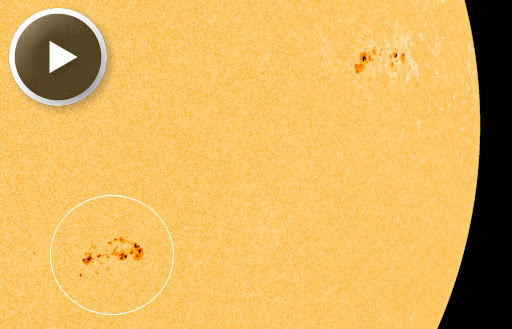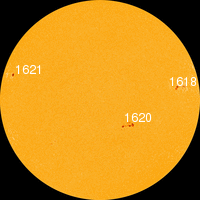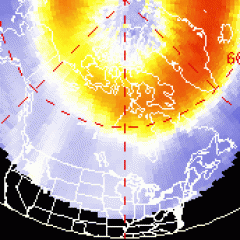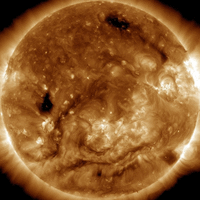CME IMPACT: A CME hit Earth's magnetic field on Nov. 26th at approximately 0500 UT (Nov. 25th @ 9 PM PST). The weak impact did not cause a geomagnetic storm. Aurora alerts: text, voice.
PRESTO! A HUGE SUNSPOT: Yesterday, sunspot AR1620 was barely visible. Today it is a behemoth wider than a half-dozen planet Earths. NASA's Solar Dynamics Observatory recorded the sunspot's rapid growth in a period of less than 20 hours on Nov. 25-26:
AR1620 has a beta-gamma magnetic field that harbors energy for strong flares. Because of the sunspot's proximty to the center of the solar disk, Earth would be in the line of fire of any eruptons. NOAA forecasters estimate a 30% chance of M-class solar flares in the next 24 hours. Solar flare alerts: text, voice.

![]()
Solar wind
speed: 475.1 km/sec
density: 2.0 protons/cm3
explanation | more data
Updated: Today at 1736 UT
![]()
X-ray Solar Flares
6-hr max: C2 1526 UT Nov26
24-hr: C2 1526 UT Nov26
explanation | more data
Updated: Today at: 1700 UT
![]()
![]()
![]()
Daily Sun: 26 Nov 12
![]()
![]()
FAst growing sunspot AR1620 has a beta-gamma magnetic field that harbors energy for M-class solar flares. Credit: SDO/HMI
![]()
![]()
![]()
Sunspot number: 64
What is the sunspot number?
Updated 26 Nov 2012
Spotless Days
Current Stretch: 0 days
2012 total: 0 days (0%)
2011 total: 2 days (<1%)
2010 total: 51 days (14%)
2009 total: 260 days (71%)
Since 2004: 821 days
Typical Solar Min: 486 days
Update 26 Nov 2012
The Radio Sun
10.7 cm flux: 121 sfu
explanation | more data
Updated 26 Nov 2012
![]()
![]()
![]()
Current Auroral Oval:
![]()
Switch to: Europe, USA, New Zealand, Antarctica
Credit: NOAA/POES
![]()
![]()
![]()
Planetary K-index
Now: Kp= 0 quiet
24-hr max: Kp= 3 quiet
explanation | more data
![]()
Interplanetary Mag. Field
Btotal: 6.3 nT
Bz: 1.6 nT north
explanation | more data
Updated: Today at 1737 UT
![]()
![]()
![]()
Coronal Holes: 25 Nov 12
![]()
![]()
There are no large coronal holes on the Earthside of the sun. Credit: SDO/AIA.





